𝕳𝖆𝖞𝖘 𝕮𝖔𝖉𝖊: 𝖆 𝖘𝖊𝖙 𝖔𝖋 𝖌𝖚𝖎𝖉𝖊𝖑𝖎𝖓𝖊𝖘, 𝖘𝖊𝖑𝖋-𝖎𝖒𝖕𝖔𝖘𝖊𝖉 𝖇𝖞 𝕳𝖔𝖑𝖑𝖞𝖜𝖔𝖔𝖉 𝖘𝖙𝖚𝖉𝖎𝖔𝖘, 𝖗𝖊𝖌𝖚𝖑𝖆𝖙𝖎𝖓𝖌 𝖙𝖍𝖊 𝖒𝖔𝖗𝖆𝖑 𝖈𝖔𝖓𝖙𝖊𝖓𝖙 𝖔𝖋 𝖋𝖎𝖑𝖒𝖘 𝖕𝖗𝖔𝖉𝖚𝖈𝖊𝖉 𝖋𝖗𝖔𝖒 1934 𝖙𝖔 1968.
Don't wanna be here? Send us removal request.
Text

#dracula 1931#dracula#bela lugosi#dwight frye#renfield#r. m. renfield#universal horror#pre code hollywood
4 notes
·
View notes
Text

This isn't turning into a full-time Dwight Frye fan blog, I just figured all the Renfield appreciators out there would enjoy his portrayal of Gravet, from Adventure in Sahara (1938).
1 note
·
View note
Text
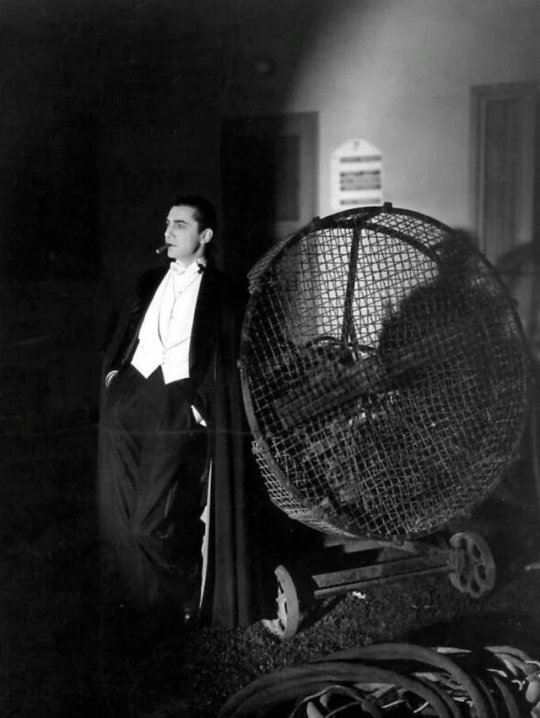
Bela Lugosi? More like Baller Lugosi, am I right?
1 note
·
View note
Text

1 note
·
View note
Text
Ranking five more lesser-known Dwight Frye movies (from best to worst)
The Circus Queen Murder (1933)

To put it bluntly: this movie is fucking nuts.
In a lot of ways, it reminds me of the nightmare-like carnival movies directed by Tod Browning and starring Lon Chaney; it operates entirely upon the level of sublimated power-sex-revenge fantasies, without ever really coming up for air. The ending is still shocking in its direness.
The basic jist of the plot is that an overworked DA named Thatcher Colt (Adolphe Menjou) goes on vacation with his clever secretary Miss Kelly (Ruthelma Stevens). Their attempt to watch a circus is derailed when they are dragged into circus drama; what seems like a standard love triangle between three acrobats (the jilted husband is played by Frye, of course) quickly enters strange territory when the husband disappears from his trailer. A threatening note, blood on the bed, and a bullethole in his window suggest murder, but with no body, the investigation goes nowhere. However, when the wife's dog is found stabbed to death, Miss Kelly and Colt begin to suspect that all is not what it seems.
See, the circus has a troop of "cannibals from the Congo" (yikes), and there is now one more cannibal in the group than when they started. Yes, the jilted husband has killed his wife's dog, faked his murder, and then goes and lurks in a blackface disguise, plotting his revenge. The wife helpfully explains, "He's crazy!" as a means of explanation. During a performance, he sneaks up onto the top of the circus tent and uses a cannibal blow-gun to poison his wife. Miss Kelly notices him climbing down and goes off to confront him. When she does, he forces her into his trailer at gunpoint and demands that Colt must bring him his wife's lover so that he may shoot him, and then himself. Without giving too much away about the ending, I wil simply say that a whole bunch of kids are left traumatized, which makes the happy ending a bit difficult to stomach.
Frye is doing his sullen, cute-but-crazy thing to great effect, and compared to the bumbling circus workers and the sluggish detectives, he pretty much steals the show. One notable divergence from a lot of his characters is that he's the main villain in this; not a henchman, a lackey, or a bit part. I'd argue that in that sense, it's one of his less pathetic roles. (Although putting on blackface in reaction to getting cucked is pretty damn pathetic).
2. Man to Man (1930)
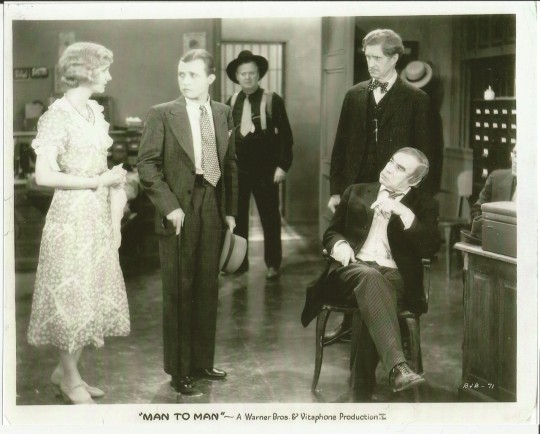
As a movie, Man to Man is not all that remarkable, but I have rated it higher on this list due to its technical competency (the bar is low here) and the interesting insights it provides.
You see, Man to Man is one of the largest roles that Frye had before being cast as Renfield in Dracula. Given that most retrospectives on his career tend to emphasize the type-casting that he was subjected to after his success in Dracula and Frankenstein, it is interesting to see what roles he was being given before those films. Unlike most other movies I've reviewed for this series, this movie is not a lurid horror or crime film, it's a low-key, realistic drama about a young man plagued by guilt. Frye is still the villain in it, but he's not a raving lunatic, just a jerk who frames a coworker for embezzlement.
The movie is basically about a young man named Michael (Phillips Holmes) whose father killed a man and was sentenced to twenty years in prison. Coming home from college, he discovers that his father has been released early for good behavior. He's anxious about meeting him, and the rest of the small southern town bullies the shit out of him for it. They think that the father's crime was a justifiable homicide, and that Michael is being unreasonable for feeling nervous about meeting his murderer dad. Kids these days!
Michael works at a bank alongside Vint (Frye), who has a thing for Michael's girlfriend, Emily. Emily is friendly to Vint, but she only has eyes for the leading man™. (As an aside: you know how movies will pretend that pretty actresses are hopelessly unattractive simply because they're wearing glasses? I think that the male version of this are these movies that pretend that Dwight Frye is hopelessly unattractive simply because he's short). To get his romantic rival out of the way, Vint frames Michael for embezzlement, and Michael's ex-con dad tries to take the fall for his son. Emily actually unravels the whole thing, and Vint is arrested. Michael presumably marries Emily and reconciles with his dad.
I watched this fairly ordinary drama wondering if it offered a glimpse at a totally different way that Frye's career could have gone, if he hadn't been subjected to the typecasting which limited his career. In the final act of the movie, however, something interesting happened. Throughout the film, Vint is a fairly ordinary, if dislikable, guy. But when his plan is finally foiled and the town cop moves to arrest him, he suddenly bursts into tears and starts wailing about how he can't go to prison. In that moment, I could see foreshadowing of the pathetic roles that awaited him. It makes me wonder if he was actually already being typecast as a chew-toy and the Universal monster movies only intensified that perception.
3. Alibi For Murder (1936)
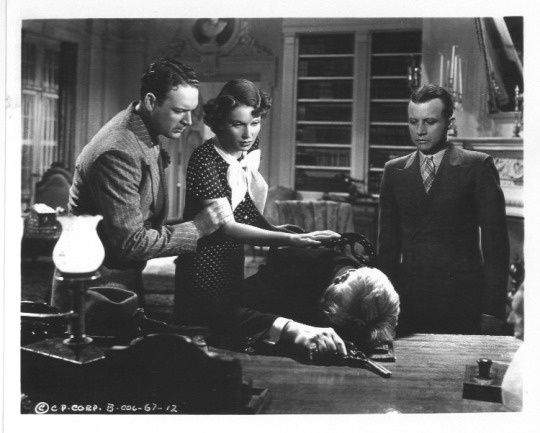
A fairly straightforward whodunnit, Alibi For Murder is the story of a radio announcer with aspirations of a detective (William Gargan), who goes to interview a prominent scientist, only to stumble upon his murder.
The movie itself is not particularly remarkable in story or style, but there are little touches that make it interesting to watch as a historical artifact. The movie starts by talking about the Hindenburg as a miracle of modern travel, a reference that had me primed for a firey explosion until I realized that the airship didn't crash unti 1937. Aside from that, the movie's anti-war message is particularly resonant in light of its release shortly before World War Two.
You see, the scientist wasn't just a scientist, the scientist was researching and selling weapons technology; Frye's character, his secretary, calls him a "dealer of death." Because of the nature of his research, the scientist has many potential killers, ranging from his pacificist secretary, to a scorned woman, to rival arms dealers. Using scientific reasoning and good-old-fashioned gunslinging skills, the radio announcer tracks down the culprit.
Frye's character as the secretary is on screen fairly briefly, though he makes a fairly manic impression. For a guy whose boss turned up with a bullet in his back, he doesn't do a good job of convincing the police of his guilt. Almost immediately, he starts ranting about how his boss deserved to die, because he had "been making money off of wholesale slaughter." Again, prescient for 1936, but maybe not something you should tell the people who are questioning you about a murder. He tries to get into a fight with one of the men questioning him and gets laid out with a single punch, proving that the poor guy couldn't catch a break, even when he isn't insane or evil. But in general, there's just not a lot to say about this. It's ok, I guess? If you want to see Frye in a whodunnit, By Whose Hand? (1932) is a more enjoyable experience.
4. The Western Code (1932)
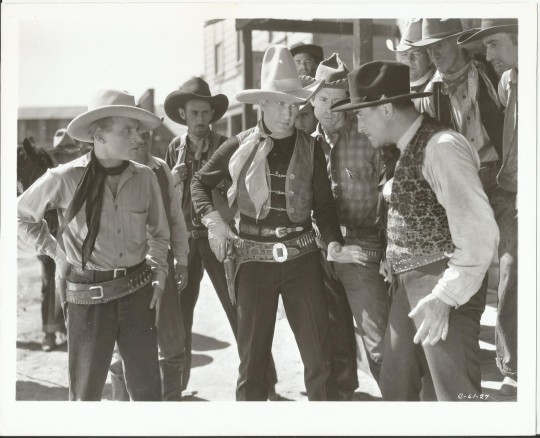
Yes, a Dwight Frye western! It's not a particularly good one, to be sure, but look at the size of those hats!
The Western Code isn't really a bad movie, but it's extremely predictable, from a modern perspective. Imagine every stereotypical western genre trope, one after the other- that's what watching The Western Code is like. It's a movie full of knife-fighting injuns, saloon fistfights, and is the first known instance of the phrase "This town ain't big enough for the both of us" in film. Tim McCoy is a gunslinger with a heart of gold and a really big hat, who arrives in a small town and saves a local girl (Nora Lane) from her pervy stepfather. She tells him that her mother has died and left all her money to her stepfather, who is using it as leverage to get her to marry him. When the stepfather turns up dead, her younger brother (Frye) is suspected of the murder. But our hero sets the sheriff straight about what really happened, allowing brother and sister to return to their family farm in peace.
If this plot description is short and lacking much detail, then that's because the plot of the movie is not particularly complex or detailed. This is a common issue with these 60-minute programmers, but The Western Code feels particularly stiff and by-the-numbers because of it's fundamentally cliché storytelling conventions. And maybe it wasn't cliché in 1932, but that doesn't make it any more rewarding for the modern viewer.
I found it funny that Frye's character was continuously called "The Kid" by everyone around him, despite the fact that he was 33 years old when he appeared in this movie. He was only eight years younger than Tim McCoy, who treats him like an overzealous teenager. It really makes me wonder how long they were gonna give him these sullen-youth type roles before he was simply too old to be believable in them. When he played Wilmer in the 1931 version of The Maltese Falcon, he was 32 playing 20. That was fairly convincing, but at some point it had to become less so.
His character in this is another of his rare heroic roles, since he's motivated only by the desire to protect his sister and his farm from his no-good stepfather. When the sheriff suspects him of murder, he's immediately lassoed, tied up (!), and barely escapes being hanged. Honestly, considering how poorly his characters fare across these movies, I was a little surprised that he wasn't. It somehow feels very in-character for poor Dwight that he would appear in a western, only to be "guy who gets hanged thirty minutes into the film." But no, he actually gets a happy ending!
5. A Strange Adventure (1932)
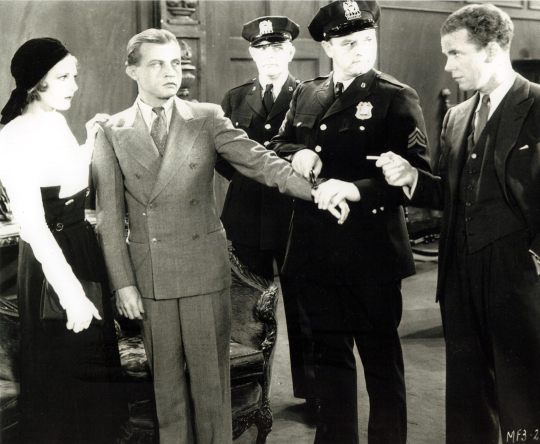
The dip in quality between the last movie and this one is quite large. The Western Code is just stiff and kind of boring, while this movie is actively bad. It's another whodunnit, old-dark-house type of movie, but this time with bad slapstick and worse racial stereotypes. Other movies I have reviewed contain racial sterotypes, to be sure, but the cannibals in The Circus Queen Murder are at least justified in-universe by being performers in a 1930s circus. They act sterotypical, but they are also playing a part, the same way that the acrobats and bareback riders are playing parts. A Strange Adventure features Jeff, a cowardly butler from Alabama played by an actor credited as "Snowflake." It's really quite painful to sit through, and there is little artistic merit to mitigate that discomfort.
Basically, this old asshole dies of a stab wound after gathering his estranged family at his old, dark house to discuss his will. He's been such a jerk to all of them that they all have motives for wanting him dead. As they try to figure out who the real murderer is, a shadowy figure in a dark hood roams around the mansion, killing people (or just tying them up and fucking with them) and causing chaos. Jeff is the only one who sees the hooded figure, but no one takes him seriously. (Personally, I think that a black guy in 1932 has good reason to not want to stay in a house with a sketchy hooded guy, but what do I know). After a bunch of "slapstick" mixed with genuinely disturbing stuff, the murderer tries to escape the house and falls into some power lines, toasting him and wrapping up the investigation with a bow. I won't give away who the killer is, except that it's not Frye's character.
Frye does fine in this movie as the dead man's moody nephew, though his ability to give a truly manic performance is limited by the wooden script and uneven pacing. A movie like this could be really atmospheric, but it just isn't- the hooded figure looks like a guy with a black bedsheet over his head, and the bright lighting of the set makes it hard to believe that the other characters don't see him coming. One thing I found funny was that Frye's character gets slapped in handcuffs by the responding officers, until the other guests advocate for him, providing another example of Frye getting tied up, beat up, or beat up and tied up in almost every movie in which he appears. But aside from that, his role is a fairly unremarkable one, and not interesting enough to make this movie really worth seeing.
#pre code hollywood#dwight frye#the circus queen murder#man to man 1930#alibi for murder 1936#the western code#a strange adventure 1932#the wayne murder case 1932#renfield#r. m. renfield#film noir#mystery#horror
0 notes
Text
"Why, I feel towards Wilmer exactly as if he were my own son!"
The Maltese Falcon (1931)
#dwight frye#pre code hollywood#pre code era#film noir#the maltese falcon 1931#the maltese falcon#ricardo cortez
0 notes
Text



The Black Cat (1934)
34 notes
·
View notes
Text
Ranking five lesser-known Dwight Frye movies (from best to worst)
The Maltese Falcon (1931)
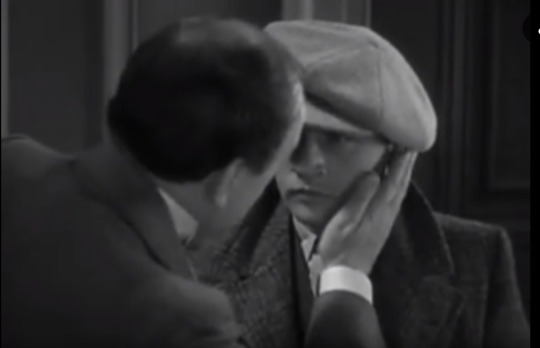
The Maltese Falcon (1931) is the first film version of the famous crime novel, but it's been overshadowed in the public consciousness by the much more famous 1941 adaptation. As a film, the '41 version is much better than the '31 version; it is much more atmospherically shot than the older version, which eschews noirish shadows for brightly lit interior sets. Humphrey Bogart is also simply a more interesting and likeable Sam Spade than Ricardo Cortez, who spends the movie leering at every woman in sight and never really seeming properly concerned with the trouble he's found himself in.
Still, there are interesting things present in the 1931 movie which make it a worthwhile watch. In the 1941 version the homosexuality of Wilmer, Joel Cairo, and Casper Gutman is strongly implied, but remains firmly in the realms of implication; it doesn't really take a genius to realize that Joel Cairo -with his scented calling-cards and Freudian affection for his walking-stick- is not straight, but the film doesn't come right out and . . . let Cairo come right out.
In the 1931 version, created before the imposition of the Hays Code, the gangsters are pretty overtly gay. In the original novel, Wilmer (the role played by Frye in this version) is referred to as "the gunsel" by Spade. This phrase, a hobo slang term derived from Yiddish, was obscure enough that it went unchallenged from his editors and was included in both the 1931 and 1941 movie versions. But while the term "gunsel" has often been assumed to mean "gunman," what it really means is "a young man kept by an elder as a (usually passive) homosexual partner."
So the hot-tempered little thug which Gutman keeps around isn't his triggerman, he's his boytoy. (Well, his boytoy and his triggerman). And the '31 movie understands the assignment; not only is Wilmer given the kind of soft-focus close-ups normally reserved for dames, but Gutman is constantly petting him possessively and stroking his face. After he flees the kitchen he's been trapped in, Spade tells Gutman, "Your boyfriend's got away." When Wilmer is ultimately betrayed by Gutman, his helpless rage is made all the more meaningful by the awareness that he's not just a gangster who's been betrayed by his boss, but a young queer man who's been betrayed by his much older partner, in a world which is deeply hostile to him. Treated with contempt by everyone around him, including the hero of the story, I'd argue that his ultimate spasm of violence is ambiguous in its intentions: is he a scorned criminal out for revenge, or an exploited outsider with no one left to turn to?
2. The Crime of Dr. Crespi (1935)
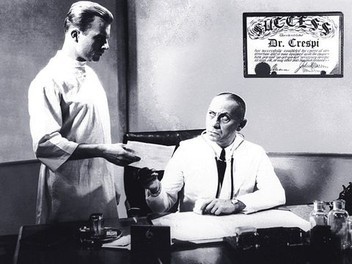
The Crime of Dr. Crespi has what I like to call a "swiss cheese plot" in that it's absolutely riddled with holes, but still manages to remain enjoyable thanks to the massive amounts of horror movie cheese inherent to a movie starring Frye and Erich von Stroheim (another cult favorite of mine).
It seems like most all of Frye's horror/crime roles fall somewhere between overtly villainous parts and pathetic ones. This movie offers a rare heroic role, but it's still tinged with the aforementioned pathetic elements. In it, Dr. Crespi (Stroheim) develops a drug which makes someone appear to be dead for 24 hours, after which they immediately revive. He uses this drug to make a romantic rival appear dead, so that he can bury the man alive and marry his wife. His assistant, Dr. Thomas (Frye) suspects that something isn't right, but Crespi beats him up and locks him in a closet. He later lets Thomas out of the closet, whereupon Thomas goes and rescues the victim from a premature grave.
I ranked this movie on the higher end despite its narrative shortcomings because it offers a glimpse at Frye in a heroic, leading role- the kind of roles that he wanted but rarely got. And like I said, it does play into the pathetic typecasting he was subjected to, but it also refutes that audience expectation in an interesting way.
See, the reason why Crespi lets Thomas out of the closet is because he thinks that he's so broken that he'll accept Crespi's mistreatment of him without protest; that he's so passive that he'll be easy to abuse and manipulate. Thomas immediately leaves and seeks help for Crespi's victim, which is the obvious correct course of action. But because Crespi (and the audience, one assumes) expects so little of Thomas, the fact that he does the logical thing becomes something heroic.
3. By Whose Hand? (1932)
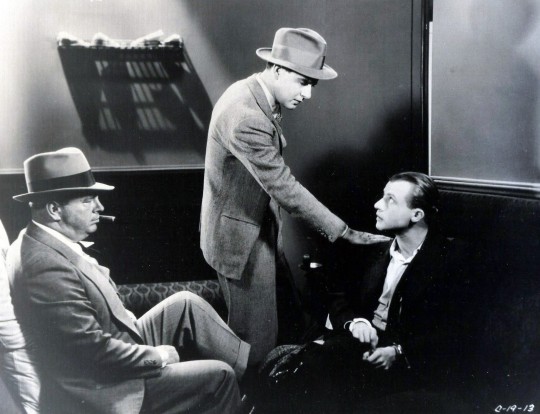
By Whose Hand? is a crime drama, and a fairly simple one at that; a murderer escapes custody just as a train is leaving the station from LA to San Francisco. On board, a group of passengers must figure out where the escaped killer is lurking, even as he strikes, one by one, killing off old associates. He must be stopped before the train reaches its destination.
The core issue with this movie is that everyone is annoying except for the criminals. Nat Pendleton plays the escaped killer, and Frye plays the convict who snitched on him. The killer runs around with a knife, and the convict manages to steal a detective's pistol, despite being handcuffed for a good portion of the film. Rather than being concerned for the innocent passengers, I found myself wishing they would have killed more of them. A good portion of the hour-long run-time is taken up with:
Annoying streetwise reporters
Annoying horny newlyweds
Annoying messy drunks
Annoying stereotypical black train porters
There are some genuinely funny/tense moments, but they are few and far between. At one point, Frye's character crams himself into an overhead bin to hide. He's a small enough guy that he can fit, but he's too heavy to keep it from slowly falling open as the policeman go down the aisle. I found the shot of the cops scouring the train car even as the snitch slips into view behind them, eyes wide, to be a particularly funny sight gag. But these little moments don't make up for the annoying (and sometimes offensive) core of this movie. Being surrounded by irritating strangers might be a realistic portrayal of public transit, but that doesn't justify the amount of time spent with these unfunny side characters. The main thing to recommend it is that it does actually sprinkle action throughout the story at a reasonable pace, which is more than can be said for . . .
4. The Vampire Bat (1933)

You know how sometimes a greatest hits album is somehow less than the sum of its parts, because it takes a bunch of good songs and merges them into a directionless whole? That's basically what The Vampire Bat is. It suffers from the same preoccupation with unfunny side characters that By Whose Hand? does, but without a reasonable tempo of action throughout the movie. For a film that only lasts an hour, it feels weirdly long; I've noticed that this is a running theme with some of these horror B-movies. They take half an hour to set up the conceit of the genre elements, and to "build tension" (as much as possible, with their limited means), which requires that the entire climax and denouement must be crammed into the final 15-20 minutes of the movie.
Like I said, The Vampire Bat is a mix of horror tropes, not done particularly well. A vampire is terrorizing the most American-sounding German village ever, and the locals suspect Hermann, the village idiot who keeps dead bats in his pockets. (Frye, obviously). A huge amount of this short movie is spent with the goofy villagers as they try to figure out what's going on, and are increasingly frightened by Hermann, who is guilty of nothing more than being a few cans short of a six pack and possibly spreading rabies. (Seriously, don't put bats in your pockets, dead or otherwise). Hermann is pretty much a cookie-cutter Renfield/Fritz knockoff; the movie even includes a scene where he crawls to an old lady who has fainted in a clear call-back to Renfield's attack on the maid in Dracula.
(Spoilers for a 90-year-old movie below).
What seems like a run-of-the-mill vampire movie suddenly diverges into a run-of-the-mill mad scientist movie when it's discovered that there really wasn't a vampire at all, but rather an evil doctor draining the blood from his patients to keep an artifically-created organism alive. The villagers chase Hermann off a cliff in the movie's best-shot scene, their torches hand-tinted red in an otherwise black-and-white movie. The doctor kidnaps the heroine and is about to drain her blood when the hero breaks into his lab. Some hugger-mugger later and the evil doctor is dead and the girl is saved.
I've never been a fan of these movies that set up a supernatural explanation and then use convoluted plot gymnastics to reveal that there was really a non-supernatural explanation this whole time. I don't much like Mark of the Vampire for this reason, and I don't much like The Vampire Bat for the same reason. It's just such a stretch even in-universe that not only does this doctor need large amounts of human blood, but he must also kill his neighbors and then frame the local eccentric disabled guy for his crimes. Why does it need to be human blood exactly? If it does need to be human blood, why not draw blood from living subjects? And if people are dying, then why pretend it's vampires?
5. Dead Men Walk (1943)
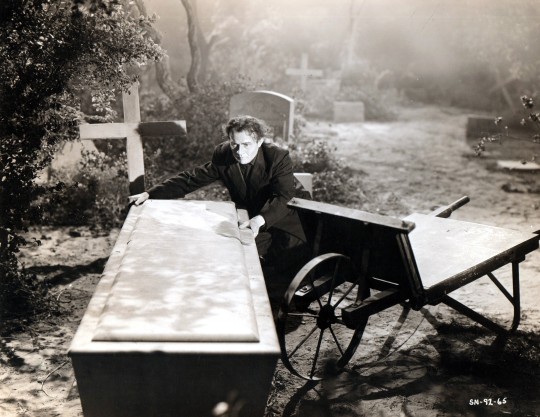
Dead Men Walk is far and away my least-favorite movie on this list, because it is the only movie that not only bored me, but actively made me kind of sad. More than ten years after Dracula and Frankenstein, Frye is once again stuck playing a pathetic ineffectual henchman, this time named Zolarr. Zolarr is pretty much another Renfield/Fritz hybrid, with Renfield's raspy little exclamations of "Master! Master!" and Fritz's hunchbacked shuffle. But something is off. This movie was made only 18 months before Frye's untimely death, and he seems unwell; he's noticeably pudgy and his movements are slower.
I don't think that it's a simple matter of him being 44 and not 34- I'm not picking on him for being older, I'm bothered because he was really too young to seem so worn out. I can't help but think that his appearance is much more the result of his declining health. That's what makes the movie sad to me; after a decade of steady work and even in the grip of a progressing heart condition, the poor guy was still stuck playing sniveling freaks in Poverty Row horror movies. And I love a good sniveling freak, but I know that he didn't.
The movie itself is baffling and wooden. It starts seemingly halfway through the plot; the town doctor has just killed his brother, who was a Satanist. The brother returns as a vampire with Zolarr in tow, and proceeds to imperil the pretty young heroine. The doctor and her boyfriend team up to defeat the vampire and Zolarr.
The main problem with this movie is the script. It doesn't just rely on exposition; basically the entire movie is expository. Characters walk in randomly and say things along the lines of, "Could there be a vampire on the loose? A creature of the night, returned from the grave?" For what I assume are budgetary reasons, the vampire can't even transform, fly, or otherwise act vampiric; he just lurks in the bushes, watching the heroes like a dirty old man. Critics complain that Dracula was too stiff and stagey; Dracula looks like an action movie compared to this one.
The only real action in this movie takes place at the very end, when Zolarr gets an altar dropped on him and dies in a fire. The scene is shockingly grim for an otherwise bloodless film. For several minutes, he screams "Master! Master!" as the flames lick higher. It's a particularly brutal way to go for a character who never directly harms anyone. Can you imagine if audiences were treated to Renfield being burned alive at the end of Dracula? This movie isn't scary, it's just an unjustified bummer. Even more than that, it's boring and an unjustifed bummer. For me, that's the cardinal sin of movie-making.
#dwight frye#universal horror#poverty row#horror movies#the maltese falcon#the maltese falcon 1931#the crime of dr crespi#by whose hand#the vampire bat#dead men walk#pre code era#pre code hollywood#r. m. renfield#renfield
4 notes
·
View notes
Text
Real.

#silent movies#pre code era#horror#silent horror#universal horror#alignment chart#metropolis 1927#the unknown 1927#the phantom of the opera 1925#dracula 1931#frankenstein 1931#island of lost souls#dracula's daughter#the black cat 1934#the mummy 1932#nosferatu 1922
17 notes
·
View notes
Text

5 notes
·
View notes
Text

194 notes
·
View notes
Text

18 notes
·
View notes
Text



Are Rotwang and/or the Magician implied to be Jewish? Is the creation of the machine-man a science-fiction version of the golem legend? In this essay, I will
4 notes
·
View notes
Text
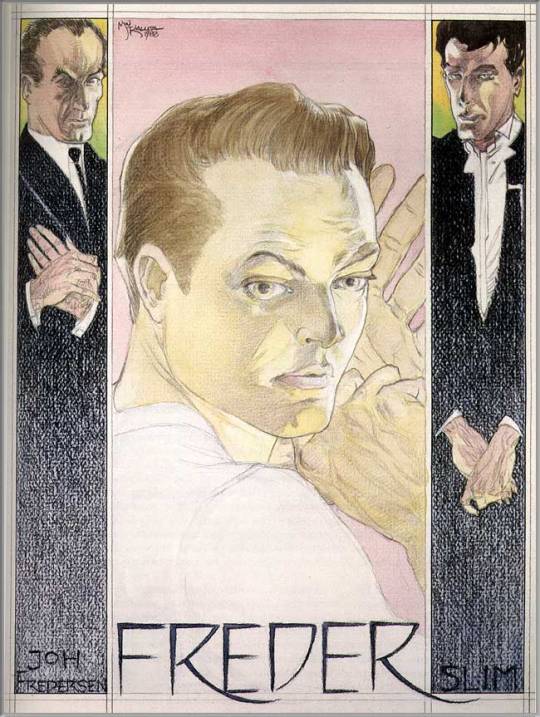
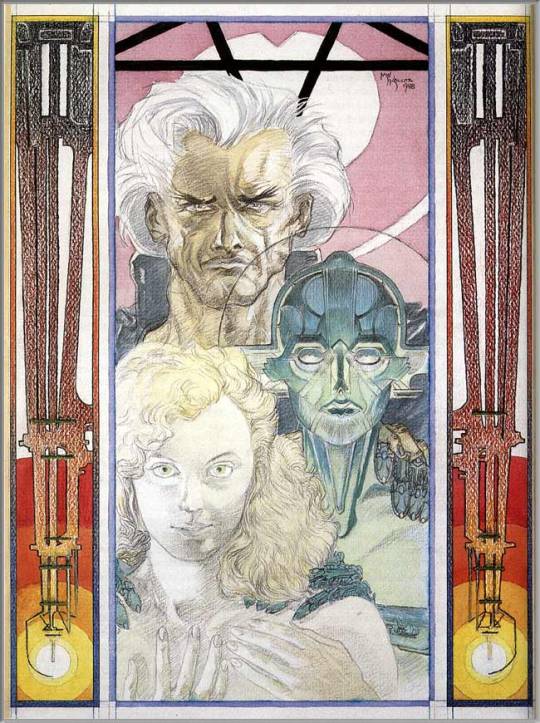
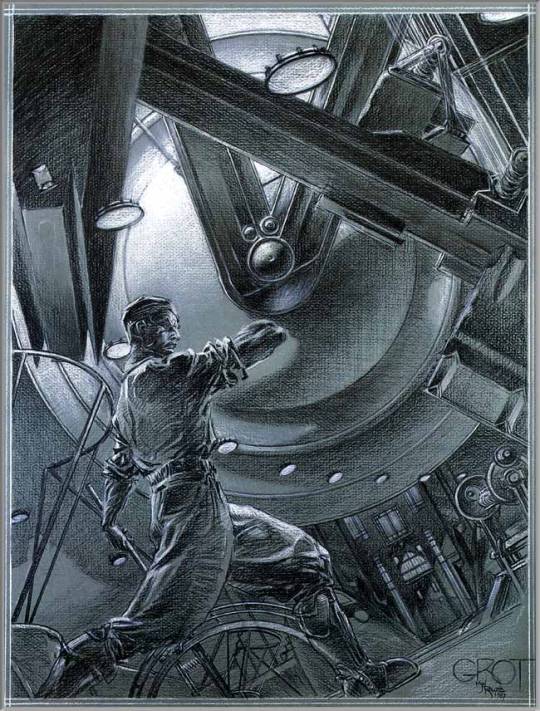
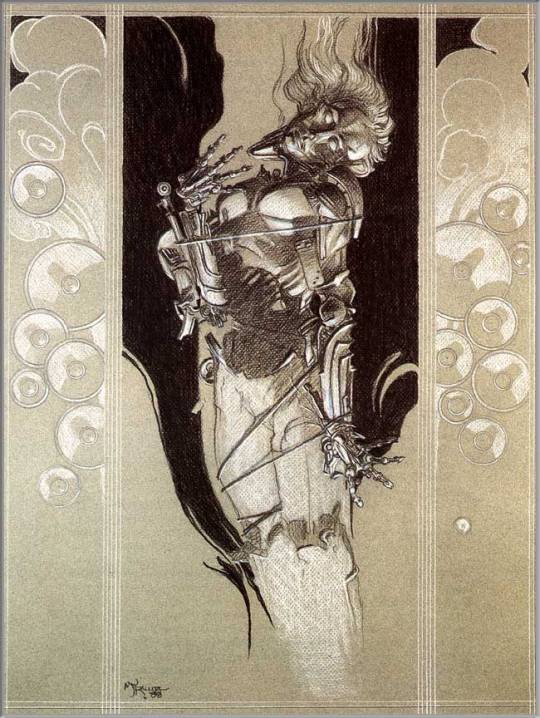
Art by Mika Kaluta, from his illustrated version of Metropolis.
26 notes
·
View notes
Text

19 notes
·
View notes
Text





Choice Letterboxd reviews of The Black Cat (1934).
7 notes
·
View notes
